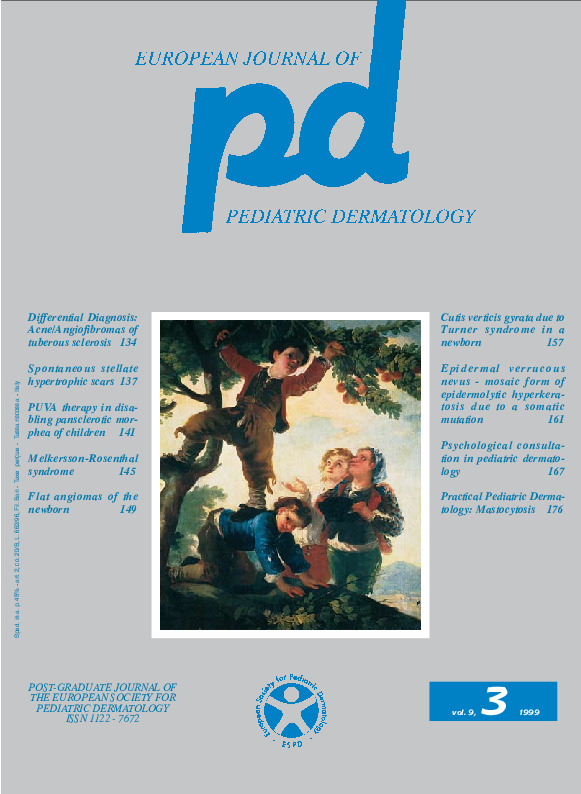Telangiectatic nevi of the newborn.
Downloads
How to Cite
Patrizi A., Neri I., Orlandi C., Trestini D. 1999. Telangiectatic nevi of the newborn. Eur. J. Pediat. Dermatol. 9 (3):149-52.
pp. 149-52
Abstract
Telangiectatic nevi are in our opinion capillary malformations. The latter can be separated into two groups, as follows: midline telangiectatic nevi and lateral telangiectatic nevi. Midline telangiectatic nevi (MTN) are called salmon patches by English Authors and receive various names in the different countries. MTN consist of capillary ectasias deriving from persisting fetal circle. MTN can be observed at birth in 40-70% of the newborns as pink-reddish macules and then spontaneously regress within a few months. Lateral telangiectatic nevi (LTN) or port-wine stains consist of progressive ectasias of the superficial vascular plexus. LTN tend to persist throughout life, sometimes thickening and giving rise to angiomatous nodules. Midline telangiectatic nevi may be rarely familial and more rarely are observed in patients with complex syndromes. Lateral telangiectatic nevi can be more easily observed in patients with complex syndromes, Sturge-Weber being the most frequent. In the newborn period, the diagnosis of midline telangiectatic nevi is easy, whereas lateral telangiectatic nevi should be differentiated from other vascular lesions. As a matter of fact, in the bewborn period the precursors of typical and atypical hemangioma are superimposable to telangiectatic nevi from a clinical point of view. The prolonged observation of these lesions is the only valid method to evaluate their evolution and right dermatological diagnosis.Keywords
Midline telangiectatic nevus, Lateral telangiectatic nevus

